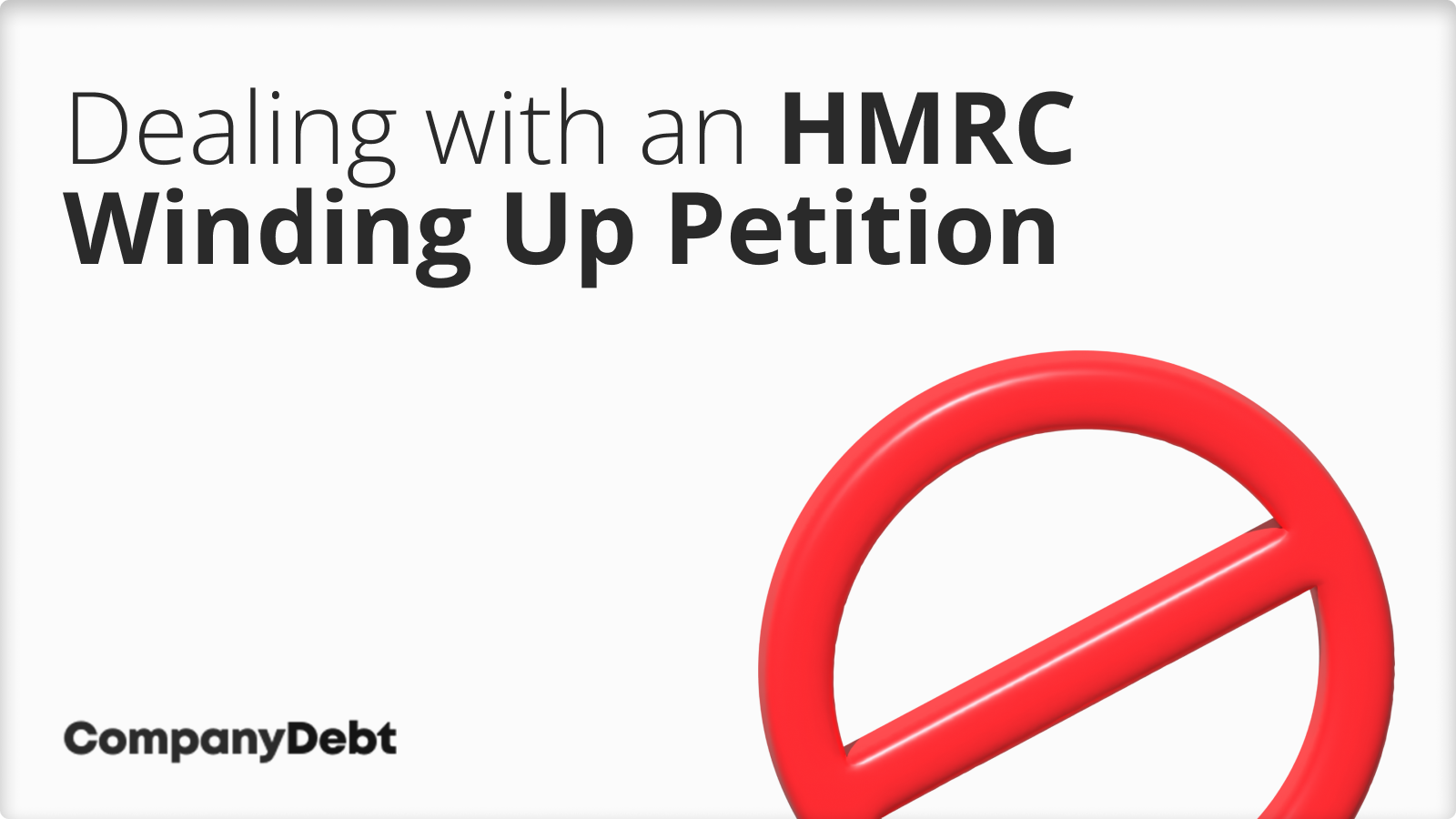
Dealing with an HMRC Winding Up Petition
An HMRC winding-up petition triggers compulsory liquidation for companies with significant unpaid tax debts.
This action is not taken lightly, as it typically follows multiple attempts by HMRC to recover the owed taxes through reminders and demands. A winding up petition is considered a last resort when all other efforts have failed.
Receiving such a demand is a critical situation for company directors. You risk losing the company and facing scrutiny over your conduct in the run-up to its financial failure.
Upon receiving the petition, the urgency to act cannot be overstated. Promptly engaging with HMRC or seeking legal advice can open up negotiation avenues or payment plans, potentially avoiding compulsory winding-up.

- What Triggers Compulsory Winding-Up Action by HMRC?
- What is the Minimum Debt for an HMRC Winding-Up Petition?
- The Winding Up Hearing
- Timeline and Key Milestones
- Challenging an HMRC Winding-Up Petition
- Potential Consequences of an HMRC Winding-Up Petition
- Implications for Directors Facing HMRC Winding-Up Actions
- Do You Need Professional Advice on HMRC Winding-Up Petitions?
What Triggers Compulsory Winding-Up Action by HMRC?
HMRC typically moves to wind up your business when you have:
- Significant unpaid VAT, PAYE, or Corporation Tax.
- Consistently failing to file returns or pay taxes on time.
- Failing to respond to HMRC’s letters, calls, or payment demands.
- Defaulting on previously agreed payment plans.
While normal creditors will always have a clear financial incentive to choose this route, HMRC will sometimes wind up a company simply because of non-compliance or to set an example.
What is the Minimum Debt for an HMRC Winding-Up Petition?
The minimum debt required to issue a winding-up petition is £750. This amount reflects the legal standard for debt that can trigger insolvency proceedings under UK law.
The Winding Up Hearing
A winding-up petition hearing is where the court decides whether to proceed with closing a company due to its inability to pay outstanding debts.
Here’s what you can expect:
- Case presentations: HMRC will outline why they believe your company should be wound up, detailing the debt and their reasons. Your legal team will have the opportunity to counter these arguments, dispute the debt, or present reasons against the winding-up order.
- Evidence examination: The court will scrutinise all documents you’ve submitted, including your financial statements and records of communication with HMRC. Ensure these are comprehensive and well-organised.
- Legal arguments: Both sides will present legal positions. Your lawyer should highlight key points that support your case.
- Court deliberation: The judge will consider all information presented. This may happen on the day or require a follow-up session if your case is complex.
- Decision: The judge will rule based on the evidence and arguments. If it goes against you, a winding-up order will be issued, leading to compulsory liquidation. A favourable decision might result in dismissal of the petition or a resolution like extended payment terms.
Timeline and Key Milestones
| Milestone | Timeframe |
|---|---|
| Issuance of Statutory Demand | Day 0 |
| Deadline to Settle Debt | Within 21 days of issuance |
| Filing of Winding-Up Petition | Post 21 days if debt unsettled |
| Serving of Winding-Up Petition | Within 7 days of filing |
| Advertisement of Petition | At least 7 days before hearing |
| Court Hearing | 8-10 weeks from petition filing |
| Court Decision | On hearing day |
| Appointment of Liquidator | Immediately if order granted |
| Liquidation Process | Varies; months to years |
| Formal Dissolution of Company | After liquidation completes |
Challenging an HMRC Winding-Up Petition
Challenging a winding-up petition requires a strategic approach, and a company has several options depending on the specifics of its case.
This might include:
- Proof of payments made
- Documentation showing errors in HMRC’s calculations
- Financial records that contradict the claimed amount
Another common strategy is to negotiate a settlement with HMRC. Prior to the hearing, the company may engage with HMRC to arrange a payment plan or negotiate a lump-sum settlement that satisfies the debt. If an agreement can be reached, HMRC may decide to withdraw the petition.
Companies may also request an adjournment of the hearing, which can provide additional time to prepare a more comprehensive defence.
Proving the company’s solvency is another effective defence. By demonstrating that it is solvent and capable of meeting its debts as they fall due, the company can argue against the premise of the winding-up petition.
Lastly, companies can challenge the petition on technical grounds. Your lawyer might examine the petition process for legal irregularities, such as:
- Improper service of the petition
- HMRC’s failure to follow due process
Remember, engaging competent legal counsel is vital. Insolvency law is complex, and an experienced lawyer can help you navigate these options effectively.
Potential Consequences of an HMRC Winding-Up Petition
If the court grants a winding-up petition, the consequences for the company are significant and typically irreversible. The process begins with the court appointing an official receiver or an insolvency practitioner to take charge of the company’s affairs. This appointment marks the commencement of the compulsory liquidation process, in which all company assets are liquidated to repay creditors.
Once a winding-up order is granted, the company must immediately cease all business operations. This cessation halts all trading activities, resulting in the termination of employment contracts, cancellation of ongoing projects, and the end of business operations. The company’s assets are then sold off, and the proceeds are distributed to creditors in a strict legal order of priority, which usually sees secured creditors paid first.
During this liquidation process, there is also an investigation into the company’s financial dealings and the directors’ conduct leading up to the insolvency. This investigation can uncover instances of wrongful or fraudulent trading, which may lead to personal liabilities for the directors involved. Furthermore, the company’s credit rating will be severely affected, making it nearly impossible to secure future business financing.
The finality of the process is the formal dissolution of the company, erasing its existence as a legal entity. Directors may also face disqualification from managing or directing a company for a certain period if they are found to have contributed to the company’s financial downfall through improper conduct.
Implications for Directors Facing HMRC Winding-Up Actions
When a winding-up petition leads to the compulsory liquidation of a company, the implications for directors can be profound and long-lasting. If the investigation during the liquidation process finds any instances of wrongful or fraudulent behaviour, directors may be held personally liable for the company’s debts. This personal liability can lead to significant financial consequences for the directors involved.
Additionally, directors may face disqualification from holding any directorship positions in any company for a period ranging from 2 to 15 years. This disqualification is not only a professional setback but also damages the director’s reputation in the business community, potentially hindering future business endeavours or employment opportunities.
The director’s personal credit score may also be impacted if they provided personal guarantees for business loans.
Moreover, if creditors or shareholders determine that the director’s actions contributed to the company’s financial distress, the director might be subject to legal action, and personal financial liability.
Do You Need Professional Advice on HMRC Winding-Up Petitions?
Don’t wait until it’s too late. If your company is under the threat of an HMRC winding-up petition, immediate action is crucial. As outlined, understanding the petition, seeking legal advice, communicating with HMRC, and considering your financial options are essential steps to potentially averting liquidation.
Reach out to our experts today by phoning 0800 074 6757, using our live chat feature, or emailing us at info@companydebt.com. Together, we can explore the best path forward for you and your company, navigating through the complexities of HMRC winding-up petitions with informed strategies and professional support. Let’s work together to secure the future of your business.






